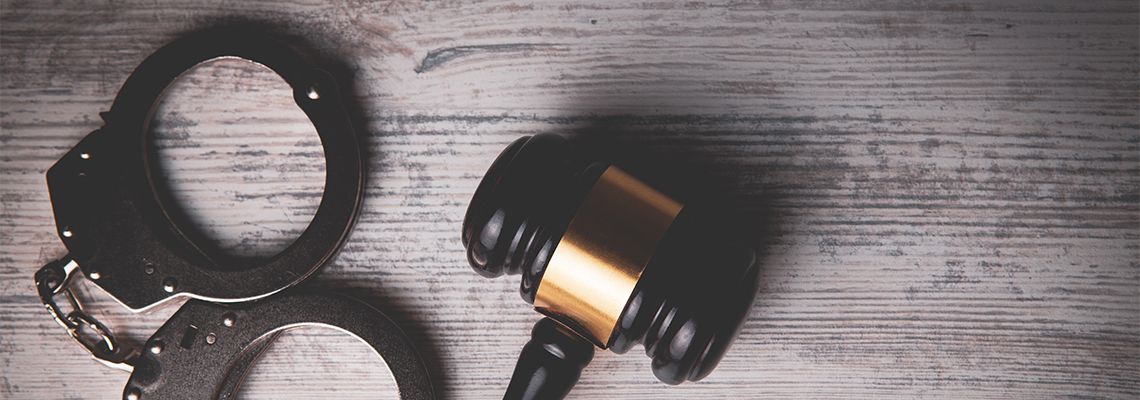When facing criminal charges, understanding the difference between a felony and a misdemeanor is critical. Felonies and misdemeanors carry very different consequences, and knowing what is at stake can make a big difference when planning a defense.
Is DNA Evidence Infallible? in Some Cases, Apparently Not
Legal experts question the validity of some of the science behind forensics. Recently, one of its most trusted tools – DNA testing software developed and used in the New York City Medical Examiner’s office – proved to be faulty. As a result, thousands of criminal convictions throughout the country could be called into question. And it begs a bigger question: Are there other areas where DNA testing is less than reliable?
Since the late 1980s, forensic DNA evidence has been a vital tool to criminal investigators, in both incriminating and exonerating suspects. Matching a person’s genetic material with a sample found at a crime scene has proved compelling to judges and juries.
But not all DNA evidence is equal. Sometimes it is clear, as when blood or semen identifies a single suspect. But if the samples are small or indistinct, such as a few skin cells left on an object, or if more than one person’s genetic material is on the sample, ambiguities exist and the evidence is inconclusive. Additionally, it is impossible to tell what part of the body the DNA came from. So if blood cells from one individual come in contact with skin cells from another, the DNA test can show a mix of DNA, but can’t tell what type of cells contributed to the sample.
Over the years, new types of DNA analysis have been introduced that purportedly interpret trace amounts or complex mixtures. This has led to a “cottage industry” producing testing tools, chemical kits, and software. As analysis has become more complex, their techniques and results are being called into question throughout the U.S. Just in the past three years, flaws in DNA methods have temporarily shut down testing in public crime labs in Austin, Texas, and Washington, D.C.
The DNA laboratory in the office of New York City’s chief medical examiner has become a pioneer in analyzing the most complicated evidence from crime scenes. It developed two software-based techniques. Both went beyond standard practice at the FBI and other public labs by identifying minuscule DNA samples, as small as one trillionth of a gram, or containing a mix of genetic material from multiple people. As the reputation for these techniques spread, the NYC DNA lab-processed evidence from other jurisdictions — some from as far away as Texas and Montana – at $1,100 per sample.
Now, these DNA methods are being scientifically questioned, according to ProPublica. In court testimony, a former lab official said she was fired for criticizing one method, and a former member of the New York State Commission on Forensic Science said he had been wrong when he approved their use. The lab official – ordered by a judge to examine the software source code behind one technique – concluded that its accuracy “should be seriously questioned.” In light of these doubts, the lab shelved the two methods and replaced them with less controversial technology.
A coalition of defense lawyers has asked the New York State Inspector General’s office, which oversees the state’s crime labs, to launch an inquiry into the use of disputed DNA analysis methods in thousands of criminal cases. In their letter to the Inspector General, the Legal Aid Society and the Federal Defenders of New York wrote that the NYC medical examiner’s office “has engaged in negligent conduct that undermines the integrity of its forensic DNA testing and analysis,” kept problems with its “unreliable” testing and “unsound statistical evidence” secret from the public and the courts, and led to some innocent people being “wrongly convicted, and others guilty of serious crimes going free.”
Many defendants have also chosen to plead guilty, rather than face the possibility of a lengthy sentence after trial, in the face of DNA evidence against them. And because of their admission of guilt, judicial review of their cases may be difficult to obtain.
One “poster case” that exemplifies the disputed DNA technique arose in the 2013 beating of Taj Patterson. A group of Hasidic men attacked Patterson, a black student, in Williamsburg, Brooklyn. A microscopic DNA sample allegedly pointed to Mayer Herskovic. He had no criminal record; no other physical evidence linked him to the attack; no witnesses placed him at the scene. And yet, he was convicted of gang assault and sentenced to four years in prison, based solely on DNA evidence. Herskovic is appealing.
Since this case came to light, the Inspector General’s office has looked at other cases with dubious DNA evidence using this (and other) testing methods. The days of a minuscule amount of genetic material’s convicting someone, with nothing more than circumstantial evidence to support it, may be coming to an end.
If you’ve been charged with a crime in New York, you should contact the Law Office of Michael D. Litman, PLLC as soon as possible. If you have questions about how we can help you or wish to set up a consultation, contact us online or call us.
RECENT POSTS
Driving while intoxicated (DWI) charges in New York carry serious and lasting consequences. When someone pleads guilty or is convicted, the impact goes far beyond fines or jail time.




